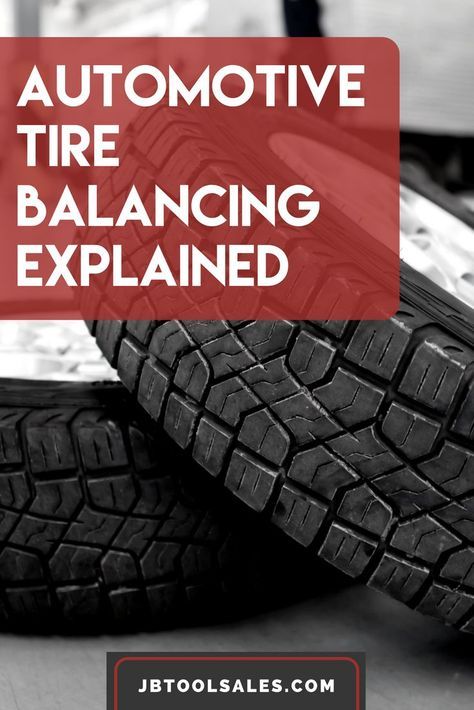The question, "How long does a tire last?" tends to be followed by several others like, “What causes a tire to wear? When should tires be replaced? What can be done to make tires last longer?” Fortunately, we can help provide clarity around these questions.
There is no exact answer to how long a particular tire will last, but there are things a driver can do to get the most out of their tire investment and avoid driving on unsafe tires. On average, people drive between 12,000 to 15,000 miles a year, which means the average good quality all-season tire will last somewhere between three and five years, depending on maintenance, driving style and conditions, etc.
The National Highway Traffic Safety Association (NHTSA) states a driver is three times more likely to be involved in a crash caused by poor tire condition. Safer is smarter when it comes to the health of tires, so if there is ever a question on tread wear or age, have the tires checked.
Multiple factors play a role in how long a tire may remain in service. Miles driven, road conditions, driving style, maintenance and age all affect how long a tire lasts.
Worn vs. Aged
Tires naturally wear the more they are driven and worn out tires provide reduced traction compared to those with adequate tread, especially in adverse weather conditions. Most drivers understand worn out tires (remaining tread depth at or below 2/32”) should be removed from service.
Many drivers are not aware that minimally used tires, like the ones on recreational vehicles, collectible cars, or even spare tires, tend to experience aging instead of wearing, due to a lack of driving. An aged tire has a substantial amount of tread; however, the structural integrity of the tire is weaker because the tire needs to be driven for the chemicals in the rubber to remain effective.
Curbs, Potholes, and Other Hazards
Hitting curbs or driving on roads in poor condition (potholes, broken pavement, poorly graded railroad crossings, unpaved roads, etc. ) can cause misalignment, and suspension damage that affects tire wear. If your daily drive includes these challenges, be sure to schedule annual suspension, alignment and tire checks.
) can cause misalignment, and suspension damage that affects tire wear. If your daily drive includes these challenges, be sure to schedule annual suspension, alignment and tire checks.
Weather Conditions
Driving in poor weather conditions like ice, snow, and rain can cause tires to wear quicker because they must work harder to maintain traction. Purchasing tires that are specially engineered to perform in specific weather conditions can provide drivers with an extra measure of traction and control (meaning greater safety) while delivering good treadwear.
Bridgestone offers different types of tires designed to keep you and your car safe during any weather or road condition. For example, Bridgestone's Blizzak tire series is built to perform in harsh winter weather conditions providing durable traction on snowy and icy roads, and the Dueler tire series is one of several that offer a secure grip on wet road conditions for areas that experience heavy rain.
Poor Driving Habits
Poor driving habits like hard cornering, quick acceleration, and sudden braking can increase the stress on tires tremendously, causing them to wear rapidly. Drivers can extend the life of their tires significantly by avoiding aggressive driving.
Drivers can extend the life of their tires significantly by avoiding aggressive driving.
Neglected Maintenance
It is important to regularly have tires checked for damage, to maintain air pressure levels, and to keep tires aligned and rotated. Without proper maintenance, tire life can be reduced by as much as half - even more, in some cases.
If the below signs are evident with your tires, it may be time to have them replaced.
Low Tread Depth
Tread loss is a significant sign a tire needs to be replaced. Low tread is a sign driver can physically see happening on their tire. Depending on the part of the tire that is wearing, there may be other problems with the vehicle.
Pronounced inner or outer shoulder wear: tires are misaligned
Edge of the shoulder wear: tires are under-inflated, need to be rotated or both.
Center wear: tires may be overinflated or have been subjected to extremely hard acceleration.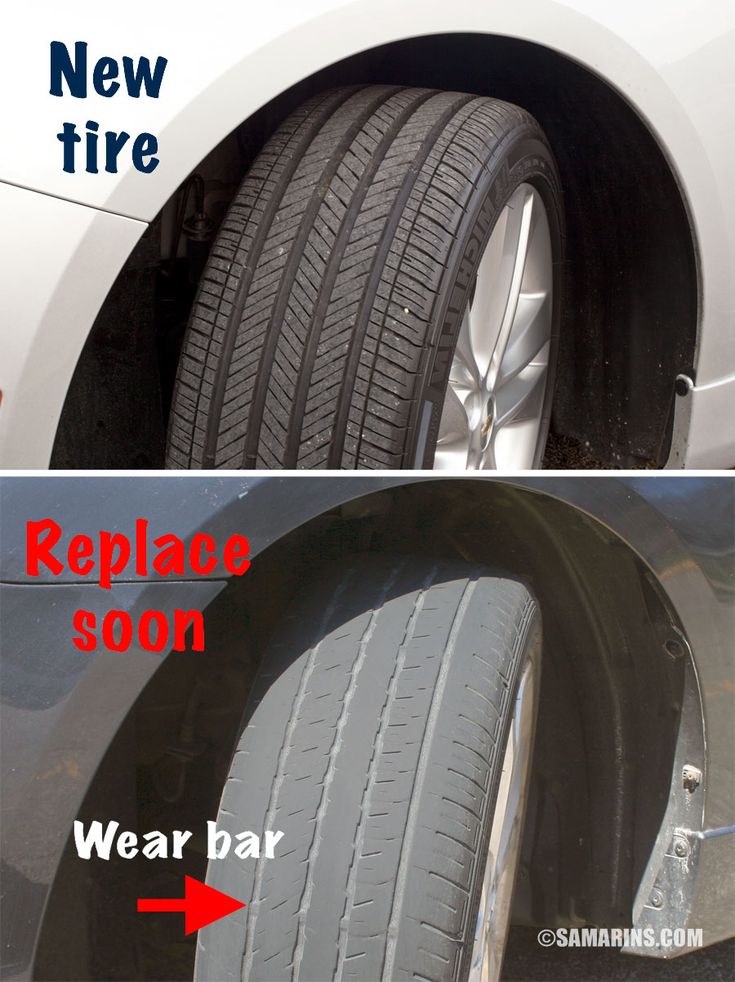
Cupped wear: the vehicle is experiencing suspension problems
All tires have tread wear indicators built-in, but if the tread looks low take time to do the penny test on the tires.
Rough Drive
If you’re experiencing a vibration (particularly if it just started), or high (and increasing) levels of tire noise it may be a sign your tires are out of balance, not wearing properly or have a structural issue. In some cases, this may affect safety, so have your tires checked by a qualified professional asap.
DOT Number
The U.S. Department of Transportation (DOT) number on the tire’s sidewall is another way to help keep track of when they need to be replaced. It’s easy to identify - look for the letters “DOT” followed by eleven or twelve letters and numbers. On tires made after the year 2000 the final four digits signify the week and year of manufacture. So, a tire with “3618” would have been made in the 36th week or 2018. A tire that has a 3-digit week-and-year code means the tire was made before the year 2000 and should be replaced due to age.
Bridgestone recommends that its Bridgestone or Firestone brand tires be removed from service after ten years regardless of their remaining tread depth. They also recommend periodic inspections by a qualified technician for damage such as punctures, impact damage, signs of improper inflation or overloading, or other conditions resulting from the use or misuse of the tire.
Tires are both one of the largest maintenance expenses a vehicle owner is likely to face, and one of the most critical in terms of driving safety and performance. For both reasons it’s important to care for them properly. Bottom line: good maintenance and driving habits help keep drivers safe, and it saves them money by extending tire life.
Easy Does It
Tire life can be reduced by as much as half when they’re subjected to a lot of hard braking and aggressive acceleration from a standstill. Avoiding tailgating to reduce the need for frequent hard braking will increase tire life.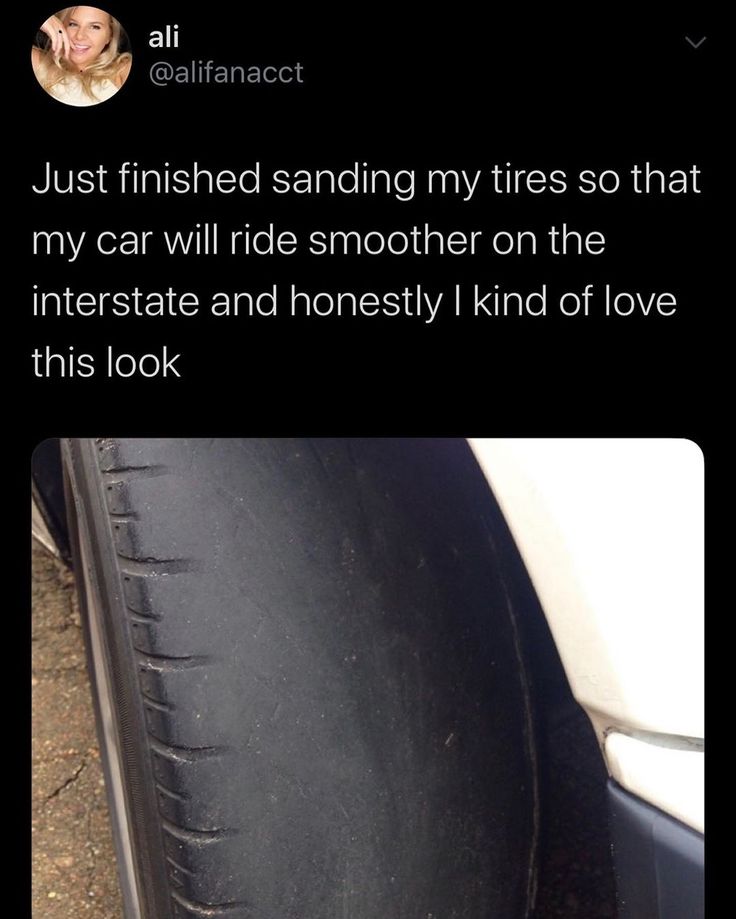 Easing into the throttle when pulling away from a stop reduces strain on the tires and improves wear. Slowing before sharp corners also reduces stress on tires, as does avoiding potholes and broken pavement when possible. If you’re interested in spending less on tires, following these steps can help.
Easing into the throttle when pulling away from a stop reduces strain on the tires and improves wear. Slowing before sharp corners also reduces stress on tires, as does avoiding potholes and broken pavement when possible. If you’re interested in spending less on tires, following these steps can help.
Regular Maintenance
Another way to extend tire life is to keep up with the proper maintenance of a vehicle and its tires. A couple of things you can do yourself are to check the air pressure and tread depth. You should have a qualified technician periodically check their balance and alignment and be sure to have tires rotated at regular intervals. maintenance is essential for your tires to perform their best and last their longest.
How often you change your tires depends on a number of factors including what sort of car you own, where and how you drive it, and how well you care for your tires. Responsible drivers should be aware of the basics about tire wear, how to test for wear, and know how to decide when they should change their tires.
Tires are constructed with a pattern of grooves and ridges on their surfaces, which is referred to as tread. Tread increases a car's traction on the road and diverts water from beneath the tire in wet conditions. Although tires are designed to provide reasonably consistent performance throughout their lifetimes, tread does wear down over time and gradually becomes less effective.
The nature of the compound that particular tires are constructed of largely determines whether one tire will wear down more quickly than another. Tires made of softer compounds provide greater responsiveness and braking performance, but they also wear down quicker. Most tires are considered to have a life of between 25,000 and 50,000 miles before they need to be replaced. However, these numbers are only averages. A car owner's manual can include specific recommendations regarding how often and in what manner tires should be replaced for a particular model of car.
How often tires should be changed depends not only on the tires but also on usage.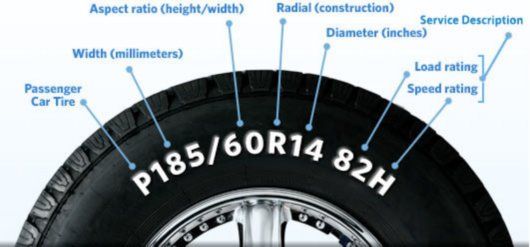 Fast cornering, heavy braking and rough road surfaces can all wear tires down significantly. Poor maintenance and overloading are also detrimental -- the National Highway Traffic Safety Administration (NHTSA) recommends that drivers check tire pressures at least monthly. Tires also degrade even when they are not being used. The NHTSA recommends that tires be replaced every six years regardless of the number of miles driven.
Fast cornering, heavy braking and rough road surfaces can all wear tires down significantly. Poor maintenance and overloading are also detrimental -- the National Highway Traffic Safety Administration (NHTSA) recommends that drivers check tire pressures at least monthly. Tires also degrade even when they are not being used. The NHTSA recommends that tires be replaced every six years regardless of the number of miles driven.
Proper inflation is the Holy Grail of tire maintenance. Too much or too little air in your tires is guaranteed to cause you trouble and uneven or excessive wear over time. Check your owner's manual or the label inside the driver's door for the recommended inflation pressure for your car's tires.
If you are considering buying a used car, it is worth inspecting the tires of the prospective vehicle and asking some questions about their maintenance and general usage. This will allow you to estimate whether you will also need to purchase a new set of tires as well as the vehicle itself.
When assessing your tires, you will definitely need to measure the amount of tread remaining. There are three methods for doing this, and several measurements should be taken on each tire to ensure a reliable assessment of its overall condition. The first method is to look at the tread wear bars, which are little rubber bridges in the grooves between the ridges. If these bars are level with the tread pattern, then the tire has only 1/16th of an inch of tread remaining and must be replaced.
Another test is known as the penny or quarter test, which involves inserting a penny or quarter into the center of the tread between two ridges with the image of Lincoln's or Washington's head facing toward you. If you can see the very top of the head, or worse, the space above the head, then the tire needs replacing immediately. If only some hair is visible, then it is time to consider purchasing new tires, though the need is not so urgent. If some of the forehead is concealed, there is still adequate tread.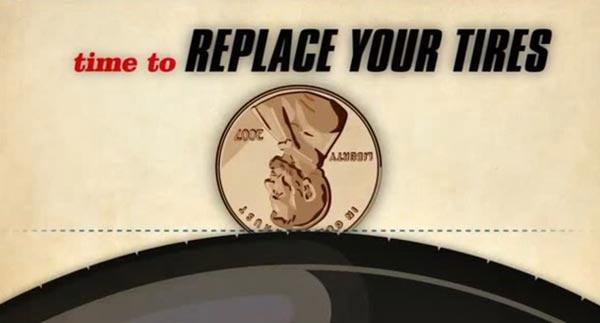
The third option for measuring tread is to buy a depth gauge. As these are cheap, easily available at auto parts shops, and simple to use. They are often a worthwhile investment and have the advantage of providing a more accurate measurement than the other methods.
It is also important to inspect the tires for other problems such as cuts or slashes, visible wires, or damage to the sidewall of a tire. Tires may also wear out irregularly, which can decrease the life of a tire and may be related to poor wheel alignment or suspension issues. These should be addressed during car service or at a tire workshop. Tire rotation may be helpful but is not feasible for all models of car, many of which use wider rear tires.
The type of tire you use will give you a part of the answer to the question of how often you should change your tires. However, the way in which you use your vehicle and care for your tires can alter their longevity significantly. It is worth familiarizing yourself with the section of your vehicle's manual that addresses tire selection and care as well as ensuring that you inspect your vehicle's tires at frequent intervals to judge whether it's time to replace them.
Related materials
7 rubber signals: what the tire says about car problems
How do you know when tires are completely worn out and it's time to change them? Everything is simple. For summer tires, the limit is 1.6 mm of residual tread depth, and for winter (or all-season tires used in winter) - 4 mm. Modern summer tires can travel from 40,000 to 70,000 km, depending on driving style and vehicle characteristics. An average motorist rolls such a mileage on summer tires in 2-3 seasons. Moreover, wear implies not only a decrease in tread depth. For millions of cycles of deformation, the strength of the carcass and its adhesion to the layers of the rubber compound are violated. In short, every 2-3 years you should buy a new set of tires.
In case of irreparable damage to one of the tires and a relatively high total mileage of the kit, it is also worth considering replacing it. Well, or about buying at least a pair of new tires, which, for any type of drive, should be installed on the front axle.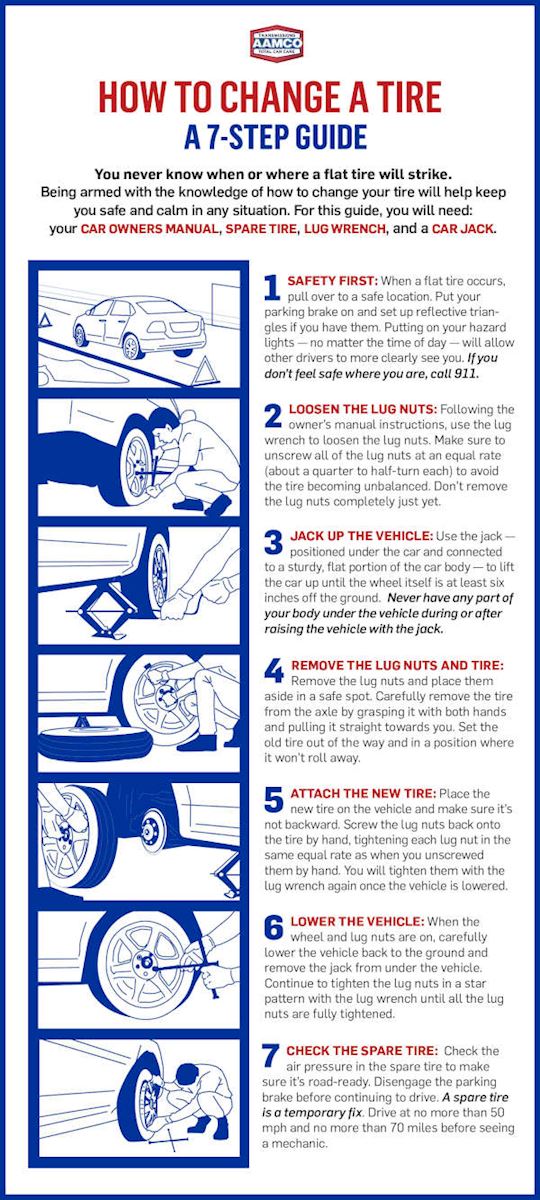 We put two tires back - the most decent of the remaining ones.
We put two tires back - the most decent of the remaining ones.
Many motorists drive only a few thousand kilometers a year. This does not mean that the tires will serve you for several decades. According to Russian requirements (GOST 4754-97), the service life of passenger car tires is 5 years from the date of manufacture. And for example, Continental recommends that all car tires (including the spare tire) older than 10 years old should be replaced with new ones. Therefore, with small runs, you can navigate for ten years. The date of manufacture of the tire is indicated on the sidewall. Usually it is an oval with four numbers. The first two are the ordinal number of the week in the year, the last two indicate the year.
Related materials
How to change the car yourself - detailed instructions
Tires should be rotated periodically in accordance with the vehicle manufacturer's recommendations - information on this can be found in the owner's manual.
We can advise you to carefully use the tires and, most importantly, to store them correctly in the off-season. First of all, during storage, it is important to exclude direct sunlight from hitting the tires, which greatly age the rubber. Tires without rims should be placed vertically, and stacked on rims.
And before installing tires on a car at the beginning of the season, evaluate their condition. There should be no cracks in the tread and sidewalls. The tire should not be dry, it should remain rubbery and not look like baked plastic.
Related materials
Driving on badly worn tires - will I be fined or not?
Winter tires have a much shorter life span. They almost always fail due to the wear of the treadmill, because the tread of a new tire is 7–8 mm, and only 3–4 mm remain working height. If the tires are studded, then with such wear there are very few metal elements left, and the tire will not provide adequate safety when driving on a winter road.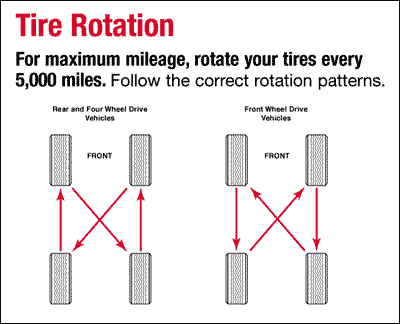 However, not only spikes, but also Velcro, with such a degree of wear, also lose most of their capabilities.
However, not only spikes, but also Velcro, with such a degree of wear, also lose most of their capabilities.
The real life of winter tires rarely exceeds 30,000 km. "Bald" winter tires without studs can be re-rolled in summer, but their grip on hot road surfaces will be very poor. This must be taken into account, especially when braking.
***
So: tires that have not yet worn out along the tread (that is, up to 1.6 mm tread depth for summer tires, 4 mm for winter tires) are changed either ten years after the date of issue, or when the rubber layer cracks tires or damage.
Our new video
Consumption 2-3 l/100 km! Test of the most economical UAZ
Test of the earliest VAZ-2103 from the surviving
Test of a new crossover. Again "Chinese"? Not quite
Did you like the note? Subscribe and you will always be in the know!
Driving on Yandex. Zen
Zen
News smi2.ru
Many motorists are wondering if 9 is needed0041 running in new tires ? Others, without any preliminary break-in, after changing worn tires, continue to drive as usual. Therefore, after a while, the tires begin to slow down badly, they slip and are less controlled. After a couple of weeks, new tires begin to obey the owner, because the rubber has been run in, albeit not according to the rules. After all, running in new tires, whether it be summer tires or winter tires, must be carried out in compliance with certain rules.
Tires are a rather complex structure. Automotive rubber consists of several layers of rubber, steel and textile fibers. In order for all the components of the tire to "get used" to each other, each tire needs a break-in period. During vulcanization, the shape of the tire is coated with lubricant to prevent the rubber from sticking. A small amount of this lubricant remains on the surface of the tire tread and helps reduce traction while riding. To break in tires, it is enough to drive a few hundred kilometers in a fairly calm mode, avoiding strong accelerations, unexpected braking and very sharp turns.
To break in tires, it is enough to drive a few hundred kilometers in a fairly calm mode, avoiding strong accelerations, unexpected braking and very sharp turns.
Running in summer tires
Breaking in summer tires is much easier than breaking in winter tyres. In order for a summer tire to effectively manifest its grip properties, it is necessary to drive the first 100 km very carefully. This distance is enough for running in, summer tires will "get used" to the road. After overnight parking, the tire should first be warmed up. And while driving, you do not need to step on the gas and make sudden maneuvers.
Running in winter tires
The dynamics of a car on new winter tires is fundamentally different from driving on summer tires. Winter tires are characterized by a large depth and width of the tread. The winter road tire design provides efficient traction in deep snow or ice. In addition to erasing the special lubricant from the tread, winter break-in serves to ensure that the driver can get acquainted with the traction of the car and the handling characteristics on winter tires.
After installing new tires, several hundred kilometers must be driven with light acceleration, with smooth turns and braking. Acceleration is allowed up to the speeds provided for by the tire design. The value of the speed index is indicated on the tire label.
Running in studded winter tires
A special approach requires running in studded tires. The spikes must fall into place, otherwise they will simply be lost during aggressive driving. It is advisable to change the car into studded tires before the famous tinsmith's day, that is, before the first snow falls. Then winter cars on well-run tires. The process of running in winter studded tires should take place before frost and before the appearance of ice.
Why is studded tires harder to break in than other winter tyres? In order to understand the reason, you need to turn to the technology of manufacturing studded tires. The spikes are made from a tungsten carbide needle. Between 80 and 100 spikes, along with a cylindrical metal groove, are inserted into the tire.